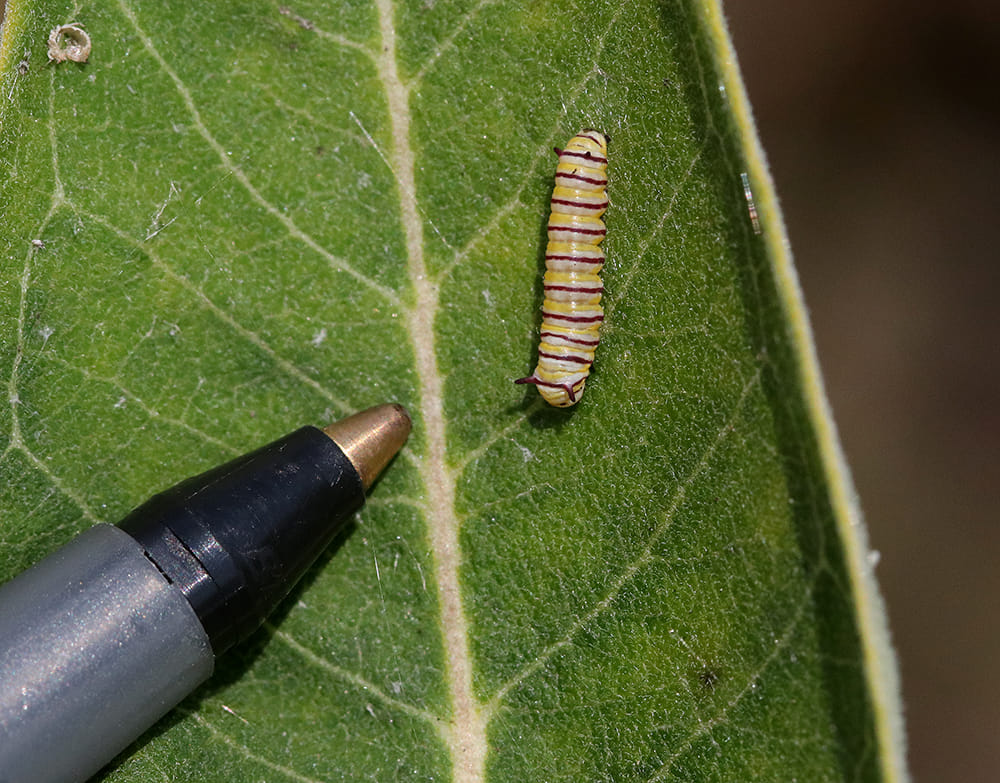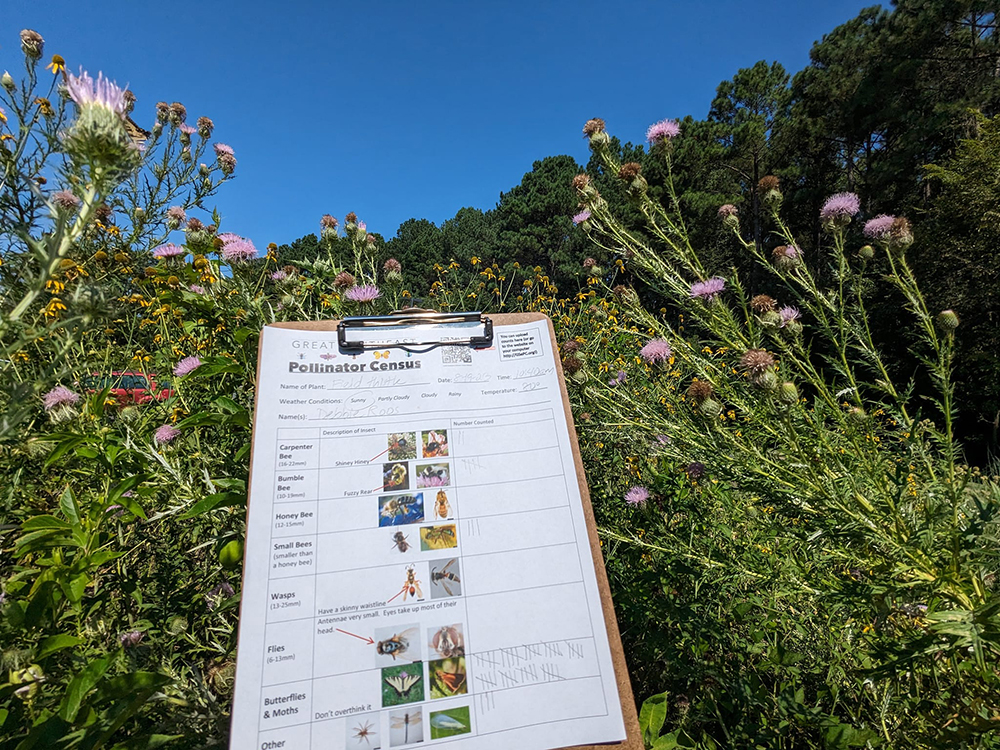Chatham County 4-H Youth Participate in the Great Southeast Pollinator Census
go.ncsu.edu/readext?959208
en Español / em Português
El inglés es el idioma de control de esta página. En la medida en que haya algún conflicto entre la traducción al inglés y la traducción, el inglés prevalece.
Al hacer clic en el enlace de traducción se activa un servicio de traducción gratuito para convertir la página al español. Al igual que con cualquier traducción por Internet, la conversión no es sensible al contexto y puede que no traduzca el texto en su significado original. NC State Extension no garantiza la exactitud del texto traducido. Por favor, tenga en cuenta que algunas aplicaciones y/o servicios pueden no funcionar como se espera cuando se traducen.
Português
Inglês é o idioma de controle desta página. Na medida que haja algum conflito entre o texto original em Inglês e a tradução, o Inglês prevalece.
Ao clicar no link de tradução, um serviço gratuito de tradução será ativado para converter a página para o Português. Como em qualquer tradução pela internet, a conversão não é sensivel ao contexto e pode não ocorrer a tradução para o significado orginal. O serviço de Extensão da Carolina do Norte (NC State Extension) não garante a exatidão do texto traduzido. Por favor, observe que algumas funções ou serviços podem não funcionar como esperado após a tradução.
English
English is the controlling language of this page. To the extent there is any conflict between the English text and the translation, English controls.
Clicking on the translation link activates a free translation service to convert the page to Spanish. As with any Internet translation, the conversion is not context-sensitive and may not translate the text to its original meaning. NC State Extension does not guarantee the accuracy of the translated text. Please note that some applications and/or services may not function as expected when translated.
Collapse ▲This was the first year that North Carolina participated in the Great Southeast Pollinator Census, a citizen science initiative that started in Georgia a few years ago and has since spread to South Carolina and North Carolina.
The main goals of the census are to 1) encourage the creation of sustainable pollinator habitat; 2) increase entomological literacy of our citizens; and 3) generate useful data about our pollinator populations. I have been doing the first two goals for over 15 years with my Pollinator Paradise Demonstration Garden in Pittsboro but I have been wanting to do more interactive programming with kids and so I thought the census might be a good fit.
There were two days designated for the Census: August 23-24. I organized an event with our 4-H youth on the morning of August 23 at the Pollinator Paradise Garden. It was so fun! The kids ranged in age from 6-13 and were so interested in all the insects. I started out with an informal “training”, using large photos to show the difference among some of the bees that were included in the census – they needed to be able to distinguish among honey bees, bumble bees, and carpenter bees, while other small native bees were lumped together. After the brief training we walked around the garden looking at various bees, butterflies, moths, caterpillars, flies, bugs, spiders, beetles, and more! Then once we were ready to start the census, each kid counted all the pollinators that landed on a particular clump of plants (single species) for 15 minutes. They all went home with a locally grown native perennial pollinator plant and everyone said they had a great time. The next day I went back to the garden and did my own census on native thistle, a real pollinator magnet!
For more information regarding the Chatham County 4-H Program, including youth community clubs, camps, and school enrichment projects, please contact Rachael Blazzard (CRD/4-H Extension Agent) at rablazzard@ncat.edu or Ginger Cunningham (County Extension Director) at ginger_cunningham@ncsu.edu.
Below are some photos from the Pollinator Census with our Chatham County 4-H youth.

Before we started the count we walked around the pollinator garden to practice identifying different types of insects. Here the kids are looking at early instar monarch caterpillars that were on the resprouted common milkweed plants that I cut back in July when they were done blooming. Photo by Debbie Roos.

Tiny early instar monarch caterpillar on common milkweed (with pen tip for scale). Photo by Debbie Roos.

The kids are looking at the dozens of black swallowtail caterpillars on the bronze fennel host plant. Photo by Debbie Roos.

Pre-census garden tour…the kids are watching all the different pollinators on native mountain mint and buttonbush. Photo by Debbie Roos.

Elaine does her count on the native ironweed. Photo by Debbie Roos.

Elaine tallied lots of pollinators on the native ironweed! Photo by Debbie Roos.

Natalie is doing her count in the native ironweed. Photo by Debbie Roos.

Brothers Michael and James count pollinators on native mountain mint. Photo by Debbie Roos.

James tallies pollinators on mountain mint. Photo by Debbie Roos.

Michael was very excited to see so many pollinators on mountain mint! Photo by Debbie Roos.

Austin stayed busy counting all the visitors to the native buttonbush shrub. Photo by Debbie Roos.

Courtney was monitoring mountain mint next to Austin on the buttonbush. Photo by Debbie Roos.

The day after the 4-H youth event I returned to the pollinator garden and did the census on native thistle. Lots of butterflies, hummingbird moths, bumble bees, carpenter bees, other small native bees, leaf-footed bugs, and a green lynx spider! Photo by Debbie Roos.


